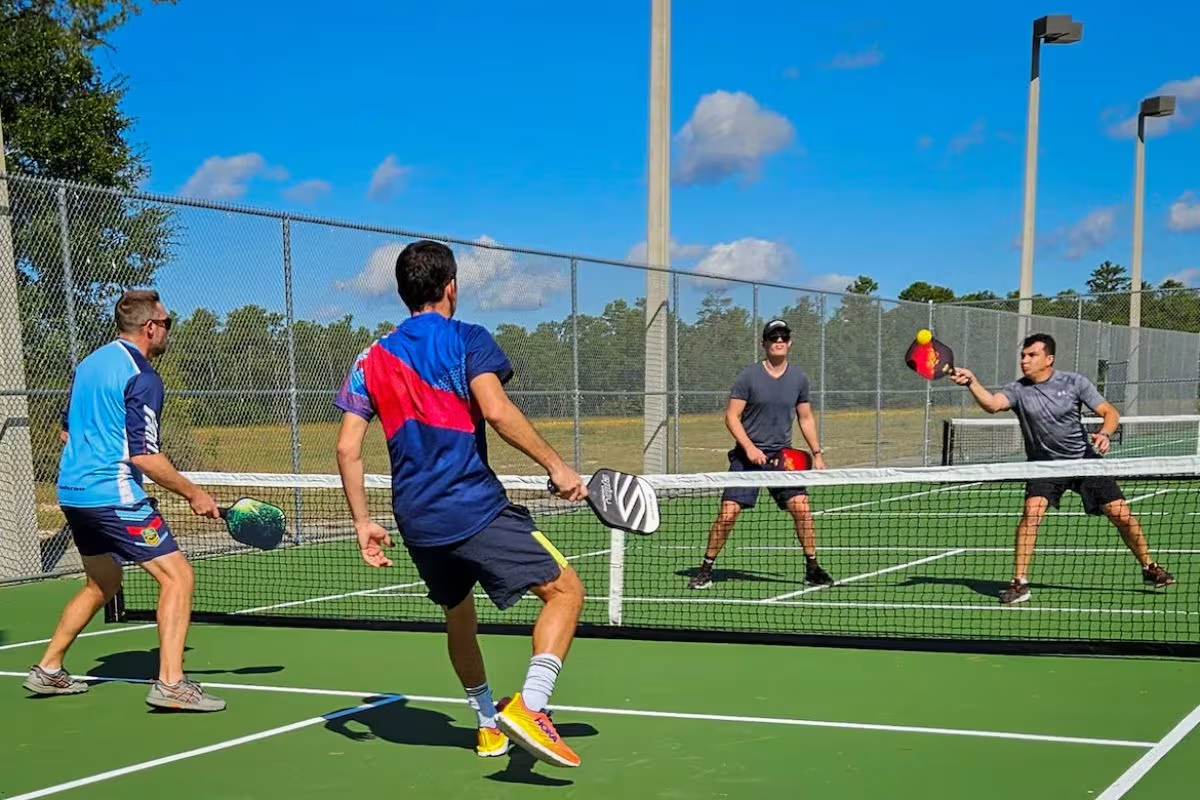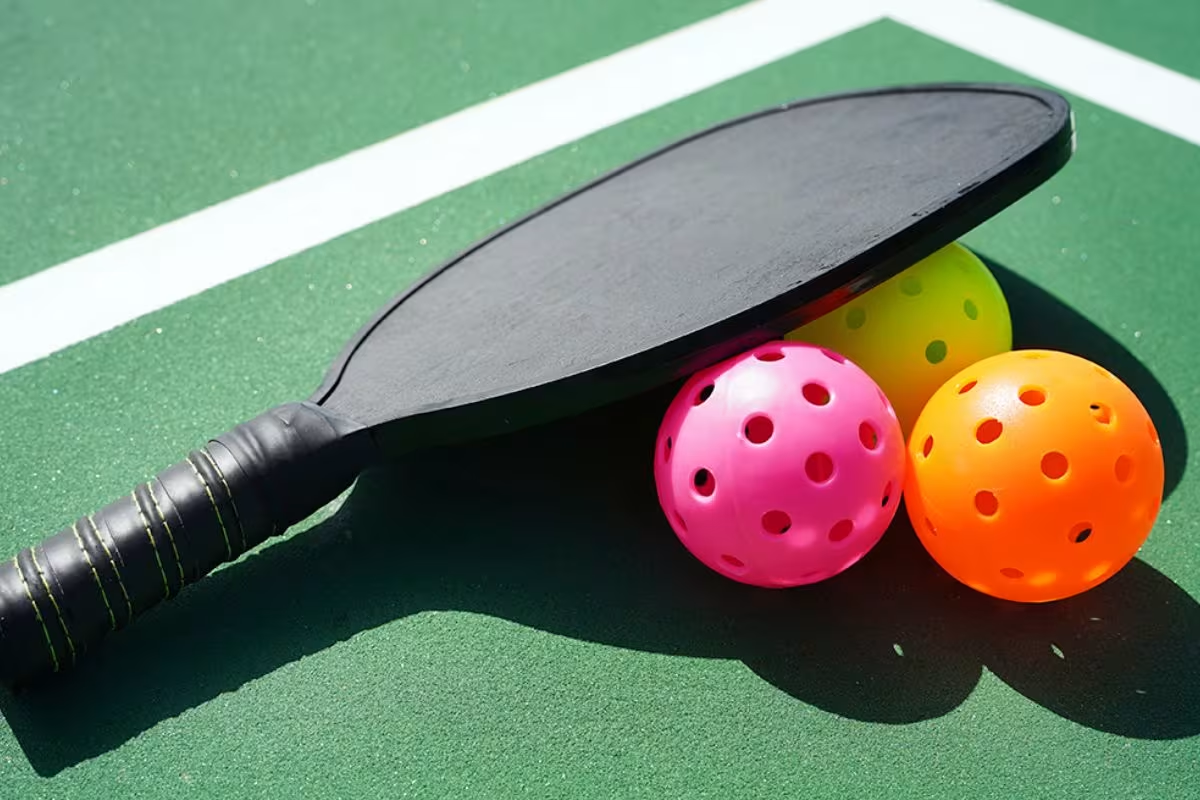Surprising Science Behind Pickleball: Pickleball has taken the U.S. by storm, establishing itself as the country’s fastest-growing sport for the past four years. According to industry estimates, more than 13.6 million people are now hitting the courts, as towns, schools, and sports clubs continue to expand pickleball facilities nationwide. From beginners to seasoned pickleball players, the sport’s accessibility has made it a favorite across age groups and skill levels.
For those unfamiliar, think of pickleball as a hybrid of tennis and ping pong, played on a shrunken court with solid paddles instead of stringed rackets. But at the heart of pickleball’s unique appeal lies the science behind it. Phil Hipol, an engineer with experience in fields ranging from aerospace to acoustics, has dedicated his expertise to uncovering the physics of pickleball—earning him the moniker ‘Professor Pickleball.’ Let’s dive into what Hipol has discovered about the game’s signature ball, paddles, and shots.
Speed on the Court: The Fast and Furious Ball
When it comes to pickleball, it’s all about speed and reaction time. Hipol has calculated that the fastest serve, when executed with precision and topspin, can hit speeds of 65 miles per hour. That’s enough to make the ball fly over the net and land just inside the baseline in only 0.64 seconds. The holes in the ball create turbulence, much like the dimples on a golf ball, allowing the ball to cut through the air and maintain a controlled trajectory.
The real action happens up close, though. As players approach the net, line drives become blisteringly fast. Hipol explains that at a distance of just 14 feet between opponents, a ball moving at 45 mph allows a player just 0.2 seconds to react. For context, that’s near the threshold of human reaction time, which makes quick reflexes essential.
The Art of the Lob: A Game of Hang Time
Not every shot in pickleball is about speed. Some require finesse, like the lob, a shot designed to launch the ball high into the air, buying the player time while putting pressure on their opponent. Hipol’s experiments show that a well-executed lob, with a launch angle of 55 degrees and topspin at 1,200 revolutions per minute, can keep the ball airborne for as long as four seconds. That’s an eternity in pickleball sports terms, allowing players to reposition themselves and prepare for the return.
The physics behind the lob come down to the ball’s aerodynamics. As it travels upward, the airflow over its surface creates lift, much like an airplane wing. The small holes in the pickleball play a crucial role in sustaining its loft, making this shot as strategic as it is unpredictable.
The Loud ‘Pop’: Pickleball’s Acoustic Signature
Perhaps one of the most recognizable elements of pickleball is the sound—the distinct “pop” when a paddle strikes the ball. Hipol, leveraging his background in acoustics, has measured the noise levels generated during play. He found that a hard shot can reach up to 120 decibels, equivalent to the sound of a hammer hitting a nail or a passing ambulance siren. On the other side of the net, players hear it at around 80 decibels, similar to the noise level of heavy traffic.
What makes the sound so intense? It’s not just the ball, but the paddle. The paddle’s hard surface and hollow honeycomb interior amplify the noise, much like the membrane of a drum. The ball’s brief contact with the paddle—just four milliseconds—causes vibrations that resonate through the paddle, creating that sharp, loud pop. As more courts are built near residential areas, noise complaints have increased, prompting manufacturers to explore “quiet paddles” with foam inserts to dampen the sound.
Innovations in Equipment: The Quest for Quieter Play
The growing popularity of pickleball has brought new challenges, particularly in communities where the sound of play can disturb neighbors. Manufacturers are working to address these issues by designing quieter paddles. While traditional paddles amplify sound through their hard surfaces and hollow cores, the new “quiet” paddles aim to reduce noise with foam inserts that absorb sound waves.
According to Hipol, whether these quieter paddles will provide the same level of control and power as standard paddles remains to be seen. For players, the balance between maintaining their edge on the court and keeping the noise down is a new frontier in pickleball’s evolution.
News in Brief: Surprising Science Behind Pickleball
Pickleball, America’s fastest-growing sport, combines physics and fun with a unique blend of paddle, ball, and court dynamics. Phil Hipol, also known as ‘Professor Pickleball,’ explains the science behind the sport, from the fast 65 mph serves to the acoustic “pop” of the paddle hitting the ball. As pickleball courts expand across the country, innovations like quieter paddles aim to address pickleball community noise concerns. Whether it’s the fast-paced action near the net or a lob hanging in the air for seconds, the physics of pickleball are integral to the pickleball game’s charm.
ALSO READ: Pickleball Excels in West Bend as Vortex Club Attracts All Players


